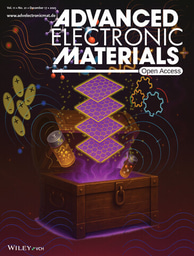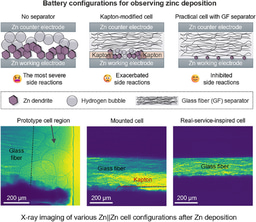Lack of detection of a human placenta microbiome in samples from preterm and term deliveries
Published in Microbiology

Historically, it was believed that the contents of the gravid uterus (placenta, amniotic cavity, and fetus) are sterile, known as the “sterile womb hypothesis”. However, recent studies have proposed that the womb is not sterile and is instead inhabited by a distinct, commensal microbiome. These studies use modern DNA deep sequencing techniques to detect a low microbial biomass community. However, these studies often have a notable lack of sequenced matched samples (e.g. maternal saliva or vaginal samples) and thorough negative controls, which are crucial to differentiate between authentic organisms and reagent contamination. Our group performed 16S rRNA gene qPCR, 16S marker sequencing, and shotgun metagenomic sequencing on placenta samples from term and preterm deliveries alongside matched samples and negative controls to see if we could detect a placental microbiome.
With the help of the PennCHOP Microbiome Program, the Maternal and Child Health Research Center at UPenn, and March of Dimes, we analyzed samples from 20 term and 20 preterm pregnancies, including saliva, vaginal swabs, and maternal and fetal side placental biopsies. The qPCR data showed that the placenta samples had low bacterial abundance indistinguishable from the background seen in the negative control samples, unlike the high abundance seen in saliva and vaginal samples. In our 16S sequencing data, the placenta samples did initially show a low level of bacterial DNA—however, we found that a majority of the bacterial lineages seen in placenta were also found in our negative controls and are documented contaminants. Performing cluster analysis showed that the communities seen in the placenta samples were not different from those in the negative control samples. Shotgun metagenomics allowed us to deep sequence these samples for all of the DNA present. After filtering out the human reads present, we saw that the majority of the remaining sequences from the placenta samples were annotated as Ralstonia, a known reagent contaminant and also seen in the negative controls. After further investigation, the remaining placenta reads could be attributed to erroneous classifications. In conclusion, our group did not detect an microbiome in placenta samples are term or preterm deliveries.
While the experimental data from this study showed negative results, the experimental design and execution demonstrated the importance of including thorough negative controls—specifically in low biomass microbiome studies. With the advent of intensive DNA sequencing methods and their widespread use in microbiome studies, it is important to understand the pitfalls of these techniques. Furthermore, the lack of detection of a microbiome in the placenta is also an important contribution to the fields of obstetrics and gynecology. The microbiome plays an import role in human health, and understanding its relevance during pregnancy and fetal development is an important aspect of this field. Recent studies suggesting to have found a microbiome inside the womb have opened a new line of thought about bacterial colonization of humans. With reports supporting both sides of the “sterile womb hypothesis”, it is important that we have thorough scientific investigations that generate reproducible results before moving forward with further research. This study underscores the importance of incorporating rigorous controls in the detection of an intrauterine microbiome.
Full paper can be found here: https://doi.org/10.1186/s40168-018-0575-4
Artwork done by Arwa Abbas
Follow the Topic
-
Microbiome

This journal hopes to integrate researchers with common scientific objectives across a broad cross-section of sub-disciplines within microbial ecology. It covers studies of microbiomes colonizing humans, animals, plants or the environment, both built and natural or manipulated, as in agriculture.
Related Collections
With Collections, you can get published faster and increase your visibility.
Harnessing plant microbiomes to improve performance and mechanistic understanding
This is a Cross-Journal Collection with Microbiome, Environmental Microbiome, npj Science of Plants, and npj Biofilms and Microbiomes. Please click here to see the collection page for npj Science of Plants and npj Biofilms and Microbiomes.
Modern agriculture needs to sustainably increase crop productivity while preserving ecosystem health. As soil degradation, climate variability, and diminishing input efficiency continue to threaten agricultural outputs, there is a pressing need to enhance plant performance through ecologically-sound strategies. In this context, plant-associated microbiomes represent a powerful, yet underexploited, resource to improve plant vigor, nutrient acquisition, stress resilience, and overall productivity.
The plant microbiome—comprising bacteria, fungi, and other microorganisms inhabiting the rhizosphere, endosphere, and phyllosphere—plays a fundamental role in shaping plant physiology and development. Increasing evidence demonstrates that beneficial microbes mediate key processes such as nutrient solubilization and uptake, hormonal regulation, photosynthetic efficiency, and systemic resistance to (a)biotic stresses. However, to fully harness these capabilities, a mechanistic understanding of the molecular dialogues and functional traits underpinning plant-microbe interactions is essential.
Recent advances in multi-omics technologies, synthetic biology, and high-throughput functional screening have accelerated our ability to dissect these interactions at molecular, cellular, and system levels. Yet, significant challenges remain in translating these mechanistic insights into robust microbiome-based applications for agriculture. Core knowledge gaps include identifying microbial functions that are conserved across environments and hosts, understanding the signaling networks and metabolic exchanges between partners, and predicting microbiome assembly and stability under field conditions.
This Research Topic welcomes Original Research, Reviews, Perspectives, and Meta-analyses that delve into the functional and mechanistic basis of plant-microbiome interactions. We are particularly interested in contributions that integrate molecular microbiology, systems biology, plant physiology, and computational modeling to unravel the mechanisms by which microbial communities enhance plant performance and/or mechanisms employed by plant hosts to assemble beneficial microbiomes. Studies ranging from controlled experimental systems to applied field trials are encouraged, especially those aiming to bridge the gap between fundamental understanding and translational outcomes such as microbial consortia, engineered strains, or microbiome-informed management practices.
Ultimately, this collection aims to advance our ability to rationally design and apply microbiome-based strategies by deepening our mechanistic insight into how plants select beneficial microbiomes and in turn how microbes shape plant health and productivity.
This collection is open for submissions from all authors on the condition that the manuscript falls within both the scope of the collection and the journal it is submitted to.
All submissions in this collection undergo the relevant journal’s standard peer review process. Similarly, all manuscripts authored by a Guest Editor(s) will be handled by the Editor-in-Chief of the relevant journal. As an open access publication, participating journals levy an article processing fee (Microbiome, Environmental Microbiome). We recognize that many key stakeholders may not have access to such resources and are committed to supporting participation in this issue wherever resources are a barrier. For more information about what support may be available, please visit OA funding and support, or email OAfundingpolicy@springernature.com or the Editor-in-Chief of the journal where the article is being submitted.
Collection policies for Microbiome and Environmental Microbiome:
Please refer to this page. Please only submit to one journal, but note authors have the option to transfer to another participating journal following the editors’ recommendation.
Collection policies for npj Science of Plants and npj Biofilms and Microbiomes:
Please refer to npj's Collection policies page for full details.
Publishing Model: Open Access
Deadline: Jun 01, 2026
Microbiome and Reproductive Health
Microbiome is calling for submissions to our Collection on Microbiome and Reproductive Health.
Our understanding of the intricate relationship between the microbiome and reproductive health holds profound translational implications for fertility, pregnancy, and reproductive disorders. To truly advance this field, it is essential to move beyond descriptive and associative studies and focus on mechanistic research that uncovers the functional underpinnings of the host–microbiome interface. Such studies can reveal how microbial communities influence reproductive physiology, including hormonal regulation, immune responses, and overall reproductive health.
Recent advances have highlighted the role of specific bacterial populations in both male and female fertility, as well as their impact on pregnancy outcomes. For example, the vaginal microbiome has been linked to preterm birth, while emerging evidence suggests that gut microbiota may modulate reproductive hormone levels. These insights underscore the need for research that explores how and why these microbial influences occur.
Looking ahead, the potential for breakthroughs is immense. Mechanistic studies have the power to drive the development of microbiome-based therapies that address infertility, improve pregnancy outcomes, and reduce the risk of reproductive diseases. Incorporating microbiome analysis into reproductive health assessments could transform clinical practice and, by deepening our understanding of host–microbiome mechanisms, lay the groundwork for personalized medicine in gynecology and obstetrics.
We invite researchers to contribute to this Special Collection on Microbiome and Reproductive Health. Submissions should emphasize functional and mechanistic insights into the host–microbiome relationship. Topics of interest include, but are not limited to:
- Microbiome and infertility
- Vaginal microbiome and pregnancy outcomes
- Gut microbiota and reproductive hormones
- Microbial influences on menstrual health
- Live biotherapeutics and reproductive health interventions
- Microbiome alterations as drivers of reproductive disorders
- Environmental factors shaping the microbiome
- Intergenerational microbiome transmission
This Collection supports and amplifies research related to SDG 3, Good Health and Well-Being.
All submissions in this collection undergo the journal’s standard peer review process. As an open access publication, this journal levies an article processing fee (details here). We recognize that many key stakeholders may not have access to such resources and are committed to supporting participation in this issue wherever resources are a barrier. For more information about what support may be available, please visit OA funding and support, or email OAfundingpolicy@springernature.com or the Editor-in-Chief.
Publishing Model: Open Access
Deadline: Jun 16, 2026





Please sign in or register for FREE
If you are a registered user on Research Communities by Springer Nature, please sign in